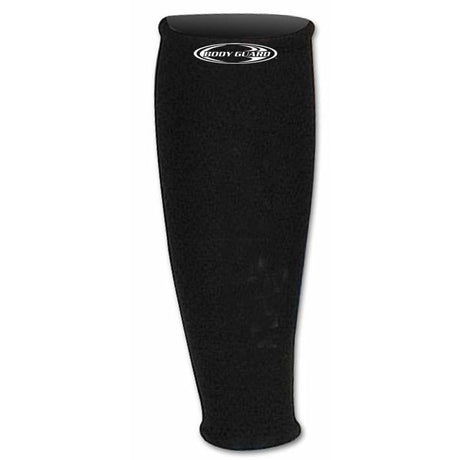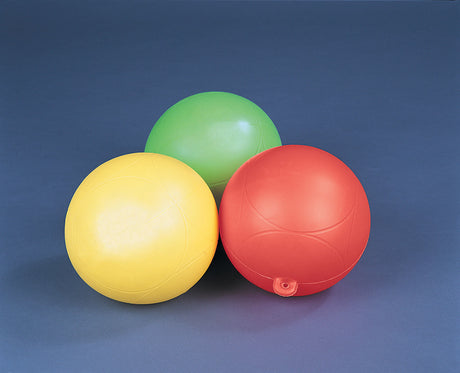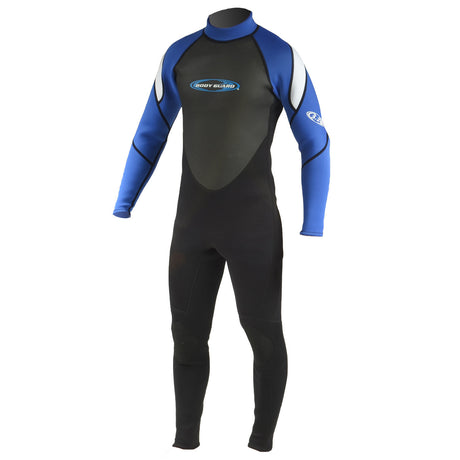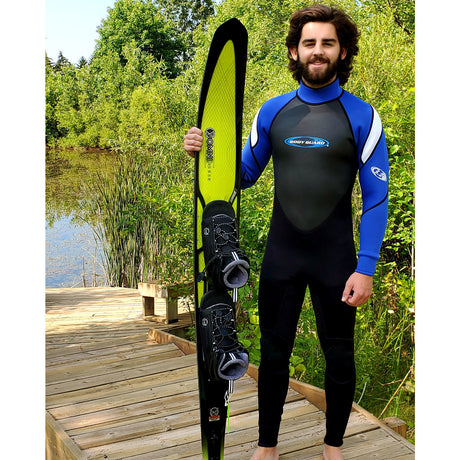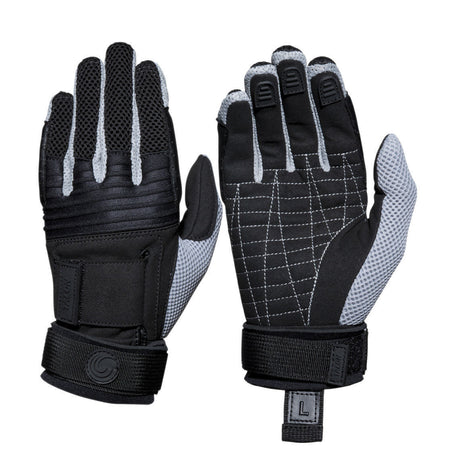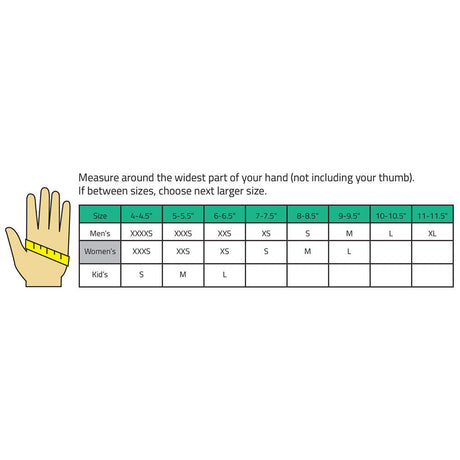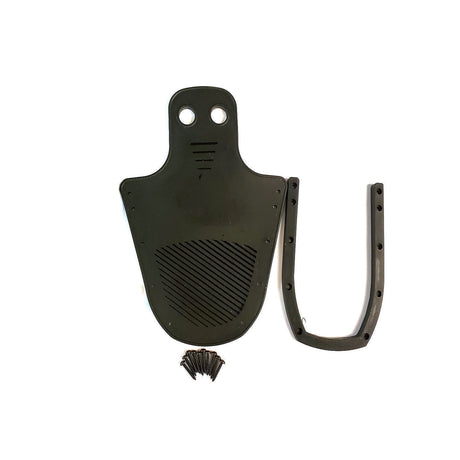Wake foiling is one of the coolest water sports you can enjoy on your local lake or shore. Wake foil boards provide the sensation of flight and the freedom to glide across the water without a tow rope. How does it work? What gear do you need to get started? Here's your beginner guide to wake foiling.
What Is Wake Foiling?
Wake foiling isn't so different from wakeboarding or surfing: You ride atop a board, cruising through the water, carving and turning and, if you're experienced, jumping off boat wakes and performing tricks in the air.
But unlike those other boards, wake foils generate lift as they move through the water. This lift raises the board and the rider above the surface of the water.
And unlike wakeboards, wake foils aren't always constrained by tow ropes and boats. You certainly can wake foil by being towed, but it isn't strictly necessary. Once you're up to speed, you can maintain forward momentum with the power of your legs.
With practice, you can even get started on a wakefoil dockside (called dock foiling), without any tow required. Many riders prefer getting up to speed with a tow, then releasing their tow rope and gliding around under their own power.
Wake Foiling vs. Wakeboarding
The riding style also sets wake foils apart from wakeboards. Wake foiling tends to be more relaxed since it offers a smoother ride. Because the board literally flies above the water, there's less friction -- and less response.
If you have experience wakeboarding and then switch to a foil, you'll notice turning takes longer. Maneuvers are slower. By riding up and out of the water with so little friction, you'll feel like you're flying instead of carving.
Wakeboarding and wakesurfing, on the other hand, involve greater speed with more dynamic and quicker movements, attracting riders who prefer a more action-packed and physically demanding activity.
But how, exactly, does one simply move atop the water with no external source of energy? Let's break down the wake foiling setup, start to finish.
Wake Foiling: How it Works

The wake foil consists of two wings -- a forward wing for lift, and a smaller rear wing for stability -- mounted to a vertical mast, which is attached to the rear underside of the board. The main wing is usually 2 to 3 feet long and 6" to 10" wide, while the stabilizer wing is often 8" to 12" long and 2" to 4" wide. Masts tend to measure 2 to 3 feet tall.
The foil's wings generate lift in the water, just like how an airplane's wings generate lift in the air. The rider can convert the foil's lift into forward momentum by pushing the board back down toward the water with their legs.
Because the foil wings and mast are subjected to incredible forces underwater, they're usually made of strong composites containing fiberglass, Kevlar, or carbon fiber.
The foil's board primarily serves as a platform for the rider to stand atop and transfer energy to the foil. Although you'll shift your weight on the board to change directions, that energy is also transferred into the foil. At speed, only the foil and part of the mast are submerged, so it's this assembly that's responsible for all momentum and turning.
Foil Boards vs. Wakeboards
At a glance, foil boards look identical to wakeboards. Besides the foil and mast, the average foil board is shaped and sized just like any other wakeboard. But there are key differences in how these two types of boards are constructed.
Wakeboards have some flex, with rocker profiles that add curves and spines to the board to aid in maneuvering atop the water. Foil boards are flatter, thicker, and stiffer. This is because they have to accommodate the mounting hardware for the foil, and the full weight of the rider above the water's surface.
How to Get Started
Wake foiling is even easier than wakeboarding, especially with a tow. The board does most of the work! Just aim the board forward, and hold onto the tow handle.
Ride the board as you would a skateboard. Feet spaced shoulder width apart, angled about 45 degrees off the front, with the lead foot in the center of the board and the back foot closer to the rear. Keep your knees slightly bent. As you pick up speed, the foil will lift you and the board up.
With the foil's wings providing lift and stability, all you need to do is enjoy the ride. Shift your weight and lean left or right to change direction. You can also pitch up or down, gaining or losing height above the water, by shifting weight between your front and back foot.
How to Dock Foil
Dock foiling requires practice, and a little finesse. You also need to have a dock that's the right height: Too tall, and you won't be able to jump aboard. Too short, and you won't be able to run alongside your wake foil with the mast and wings submerged in the water.
If you have a dock that's the right height, here's how to get started: First, rest your wake foil in the water next to the dock, keeping the board just above. If you're a leftie (or if you ride "goofy"), start on the left side of the dock. Righties, stick to the right side.
Aim the board so it's parallel to the dock. Hold onto the board and start running along the dock. Get some speed, then release the board from your grip and jump atop it. It's best to land with the rear foot first. This will push against the foil to encourage pitch and lift. Once both feet are aboard, begin pumping up and down with your legs to generate lift and forward movement. With practice, you'll be dock foiling and gliding over the water with no boat nor tow rope needed.
No dock? No problem. You can often get a running start from a shoreline, though it takes some extra effort and dexterity to mount the wake foil and get moving into deeper water.
Picking a Wakefoil Board

Picking a wakefoil board requires selecting both the right size board, and the right size mast and foil wings. Let's break it all down.
Foil Board Size
Wakefoil board sizes typically come in the following common lengths:
- 3' 6"
- 3' 8"
- 4' 0"
- 4' 2"
- 4' 4"
- 4' 6"
- 4' 8"
- 4' 10"
"Which size is right for me?"
Beginner riders should learn to wakefoil on longer boards, like those measuring 4' 4" to 4' 10". Larger boards are less responsive because they have higher swing weight: The force required to push the board in any direction.
But they're also easier to ride because they have a lesser tendency to dip down, which could kill your lift and end your ride. Bigger boards also tend to come with larger wings, which improves lift and makes staying atop the water easier for beginners.
As your skills improve, you can move to a smaller board (3' 6" to 4' 2') to reduce swing weight and gain better control of pitch and lift, and carving maneuvers.
Foil Wing Size
The size of your foil's main wing, measured in square centimeters, has the greatest impact on handling and performance. Follow these guidelines when picking a complete board or foil assembly to ensure you have the right size for your weight:
| Rider Weight |
Foil Size (sq. cm.) |
| 155 lbs or Less | 1,000 - 1,500 |
| 155 lbs -- 190 lbs | 1,500 - 2,000 |
| 190 lbs or More |
2,000+ |
It's important to note that too much foil wing can be as problematic as too little. While a small wing can struggle to provide adequate lift, a large wing can provide too much lift, reducing pitch control and maneuverability in the water.
In short: A large board with a large foil provides the easiest setup for learning to wakefoil.
Ready to dive in and start riding? Check out our selection of wakefoil board packages!



